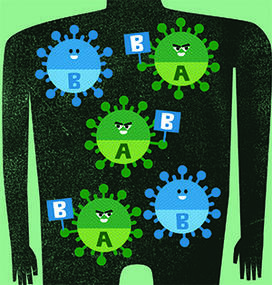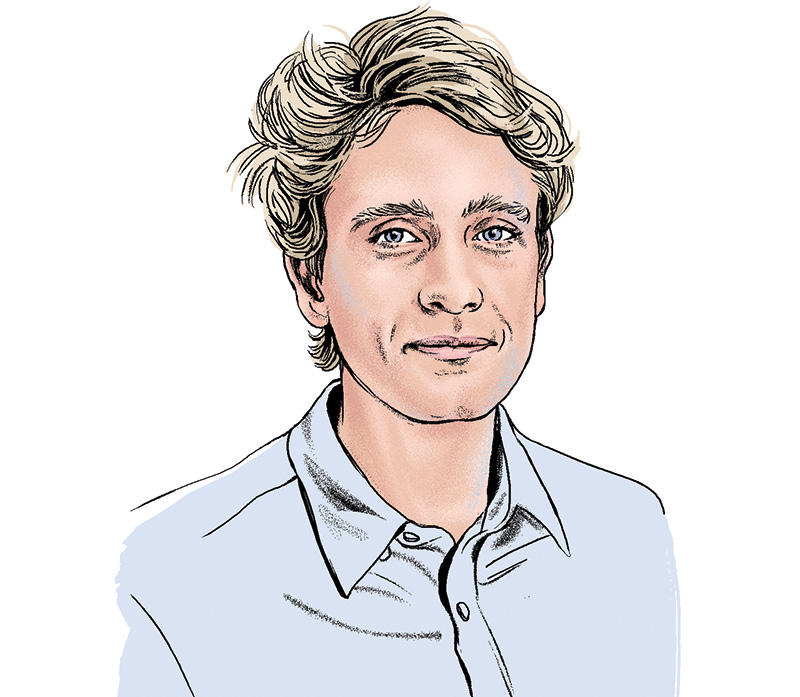A.J. Te Velthuis Studies the Impact of Viruses
A.J. Te Velthuis was always intrigued by viruses. As an undergraduate student at the University of Leiden in the Netherlands, he nurtured big thoughts about miniscule germs: How could something so small have such a massive impact on the world? “I wanted to figure out the tiny details of how viruses replicate, and what can go wrong with them,” says te Velthuis, now an assistant professor of molecular biology at Princeton.
As he finished his undergraduate studies in 2005, the first SARS coronavirus had recently hit the world, further capturing his fascination. He focused on the virus for his doctoral studies, but the molecular biology tools to investigate it were limited and he wanted to go deeper, so he switched to studying influenza viruses — illnesses the CDC estimates costs the U.S. economy more than $90 billion per year in lost work days and medical costs.
As structural biology made big technical advances, he has been able to peer deeply into the world of viruses. Princeton, he adds, has offered the perfect fit of “resources, situation, and colleagues” for his current focus on what determines the severity of a viral infection.
Quick Facts
Title: Assistant Professor of Molecular Biology
Time at Princeton: 2 years
Recent Class: Pathogens, Pandemics, and Technologies (Spring ’23)
TE VELTHUIS’ RESEARCH
A SAMPLING

COPY PASTE
Emerging influenza viruses, such as pandemic influenza strains or bird flu strains, make more errors as they replicate. This leads to the production of shortened viral genomes that play a role in the activation of the immune response. And while some activation of our immune response is good, because it helps our bodies locate the virus and destroy it, too much activation can cause pneumonia and result in death. A mass producer of these truncated genomes is the 1918 pandemic influenza virus, but other viruses — like the highly pathogenic avian H5N1 — follow the same pattern. Te Velthuis’ lab has been studying the ways these errors are created and passed on.

IMMUNE RESPONSE
Not every truncated influenza virus RNA — the single-stranded cousin of DNA —
has the same response in the human body. Te Velthuis’ lab has found that only the ones that actually interfere with the viral infection itself drive the immune response. This has given them biomarkers to look for as signs of pathogenic influenza strains. He is working with Princeton molecular biologist Cameron Myhrvold ’11 to track specific molecules throughout infections and develop a model of disease progression, which may be helpful during treatment.

VIRAL EVOLUTION
The molecules that activate the immune response are also the type of molecules that the influenza virus wants to get rid of. Fewer of them make viral replication more efficient — so more virus particles can spread — and make it less likely that the influenza virus is detected by our immune system. By looking at many decades of influenza virus evolution and how various pandemic influenza viruses have adapted to us, te Velthuis has been able to see that the signature of the molecules that affect both viral replication as well as our immune response changes over time.












No responses yet